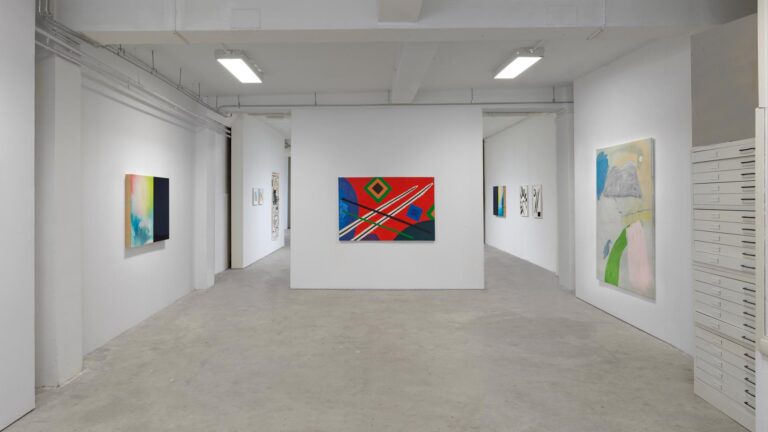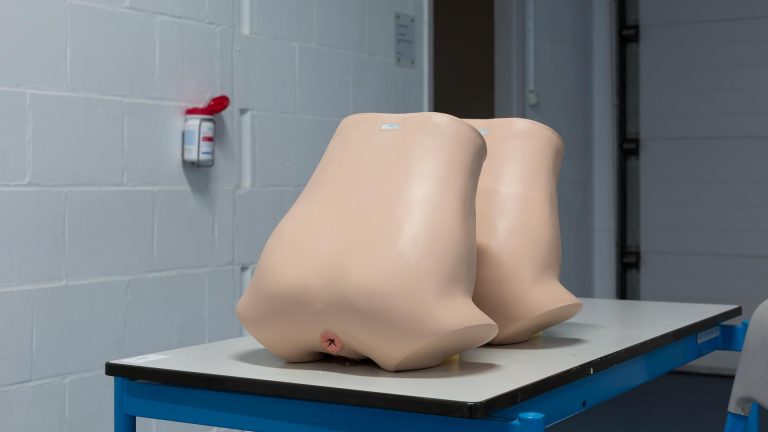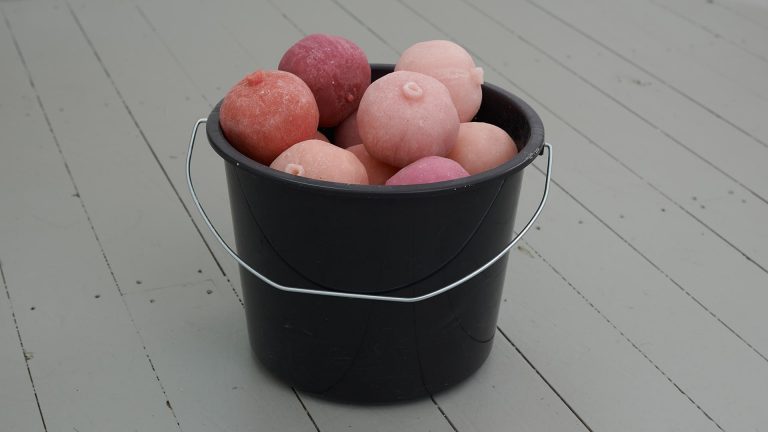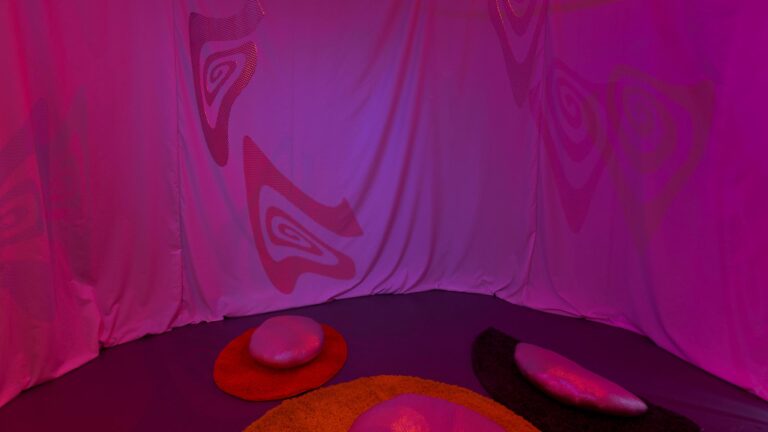Artists: Allora & Calzadilla, Peter Fend, Nicolas Floc’h, Sara Sejin Chang (Sara van der Heide), Femke Herregraven, Ryan S Jeffery & Boaz Levin, Geraldine Juárez, Sam Lewitt, Charles Lim, Yuri Pattison, Johan Rosenmunthe, S.K. Ruud & AE, Unmake Lab, Jura Shust
Exhibition title: The Dutch Savannah
Curated by: Barbara Cueto, Bas Hendrikx
Venue: Museum De Domijnen, Sittard, The Netherlands
Date: January 21 – April 1, 2018
Photography: Gert Jan van Rooij / All images copyright and courtesy the artists and Museum De Domijnen
Deep sea data cables provide our fast internet connections and make landfall in sites called landing points, from where the connection is further distributed via land. These cables connect trading hubs like London, Singapore, Hong Kong, and Amsterdam, following the old trading routes from colonial times. The Netherlands has become one of the largest hubs for internet traffic worldwide. With the exhibition The Dutch Savannah, we take a closer look at water’s role as a fundamental yet usually overlooked component of the infrastructure that supports the internet. We thus explore the connection between the online and the physical world, delving into the political and ecological implications that imply the digital sphere. We’ve borrowed the title The Dutch Savannah from a lecture Frank Stella gave in Amsterdam in 1984. This title addresses the question of how to best utilise our natural resources by phrasing it as a hyperbole: the lowlands and our eternal battle against the sea, all of a sudden faced with drought.
Huge amounts of data are produced and stored. For example, one transaction using the online currency Bitcoin is calculated to use as much energy as a regular household in an entire week. The volume of data grows exponentially and doubles in volume nearly every 18 months. Where does all that data go?
Our digital data does have a physical counterpart. To accommodate the exponentially growing amount of files accumulated by the networked society, data storage centres continue to expand. Since server farms require vast amounts of energy to operate, the impact on our natural resources and climate is considerable. Substantial volumes of water are used to air-condition computer farms, taking its toll on overall reservoirs. Despite the abundance of organic and liquidity metaphors (the cloud, data farms, the flow of information) the internet is actually not fluid nor free: it is physical, often with a heavy carbon footprint. Water is the most trusted element in the universe and the largest common denominator for all of mankind. While water used to be a prime resource and basic human right, it is increasingly used to support our digital selves instead of our physical bodies. But what are this development’s repercussions, risks, and alternatives?
Our ever-expanding use of data has enormous effects on the usage of power. It is clear now that our natural resources have become precious materials susceptible to being devoured by the increasing amount of digital data. Therefore, finding sustainable alternatives has become crucial. Large corporations such as Microsoft and Facebook are forced to find creative solutions to safeguard their data and ensure its cooling: for example by storing it in the arctic, in caves and, most recently, at the bottom of the ocean.
From the cloud to the deepest seas, our landscape and ecology are in flux. What happens to the landscape when we reroute our natural resources to our lives on the web? In The Dutch Savannah, we delve into the ecological consequences of the expansive flow of data and reflect on the environmental impact of our technological consumerism.
The Dutch Savannah, 2018, exhibition view, Museum De Domijnen, Sittard, The Netherlands
Sara Sejin Chang (Sara van der Heide), The A-Symmetrical Imperialistic Data Server, 2018
Yuri Pattison, The Ideal V.02, 2015
Peter Fend, Ocean Earth. Persian/Arabian Gulf, 1980-1990
Sam Lewitt, A Weak Local (Vacuum Sealed–Trace Revision 1A, 1B, and 1D), 2016
Specimen of telegraph Cables, 1850s – 1860s
The Dutch Savannah, 2018, exhibition view, Museum De Domijnen, Sittard, The Netherlands
Nicolas Floc’h, Lover (Coiling), 2015. Video, 11:30 min
Allora & Calzadilla, Amphibious (Login-Logout), 2005, DVD, 6:17 min
Allora & Calzadilla, Amphibious (Login-Logout), 2005 (front), S.K. Ruud &AE, Ludological, 2016 (back)
S.K. Ruud &AE, Ludological, 2016 (front), Johan Rosenmunthe, Camping by the Solo River, 2016 (back)
Johan Rosenmunthe, Camping by the Solo River (Silkscreen print #1 – #4), 2016. Silkscreen on 3M reflective fabric, pigment 95 × 136 cm each
Johan Rosenmunthe, Camping by the Solo River (Silkscreen print #1 – #4), 2016. Silkscreen on 3M reflective fabric, pigment 95 × 136 cm each
The Dutch Savannah, 2018, exhibition view, Museum De Domijnen, Sittard, The Netherlands
The Dutch Savannah, 2018, exhibition view, Museum De Domijnen, Sittard, The Netherlands
Ryan S Jeffery & Boaz Levin, All That is Solid Melts into Data, 2015. Video, 54 min
Femke Herregraven, Malleable Regress – North Sea, 2018
Femke Herregraven, Malleable Regress – North Sea (detail), 2018
Femke Herregraven, research material: newspaper clippings regarding the fabrication and infrastructure of telegraph cables, 1860s
Ingrid Burrington, Submarine Cable Taps, 2014
Geraldine, Blood and Oil, The Economist, March 2 2000, 2017 (front), Jura Shust, Absorption, 2016 (back)
Jura Shust, Absorption, 2016. Engraved aluminium, Plexiglas holders and charcoal pills 55,5 × 18 × 24,5 cm each
Unmake Lab, Generic Nature, 2017
Charles Lim, silent clap of the status quo, 2016. Digital video, 120 min






























